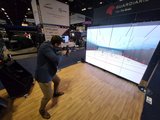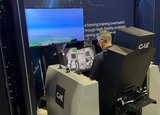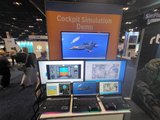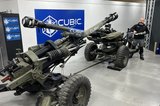US Marine Corps outlines next steps to improve synthetic training capabilities
Call-for-Fire simulation at Camp Lejeune, North Carolina. (Photo: US Marine Corps)
The US Marine Corps (USMC) has announced plans to start new acquisition and modernisation efforts in the next few years to progress ongoing programmes and improve its synthetic training capabilities.
The service has shown interest in platforms, technologies and software solutions to prepare marines from individual to battalion levels. The simulation capabilities will provide training in shooting, performing marksmanship tasks, driving ground platforms, and operating EW and C2 systems.
While the budget of some of those efforts has yet to be defined, contracts will be expected to be awarded, new efforts launched and milestones reached from FY2024 to FY2031.
Speaking at the I/ITSEC 2023
Already have an account? Log in
Want to keep reading this article?
More from I/ITSEC 2023 | View all news
-
![I/ITSEC 2023: VirTra debuts integration of VBS4 into its simulators]()
I/ITSEC 2023: VirTra debuts integration of VBS4 into its simulators
VirTra has unveiled the integration of VBS4 and BlueIG into its simulator systems with the aim of enhancing the capabilities of its technology for military training.
-
![I/ITSEC 2023: CymSTAR introduces CymLITE Series Deployable Air Refueling Trainer]()
I/ITSEC 2023: CymSTAR introduces CymLITE Series Deployable Air Refueling Trainer
The company has also used its platform at I/ITSEC 2023 to announce a new partnership with the Switzerland-based firm EDMS.
-
![I/ITSEC 2023: Guardiaris unveils the new generation of its Small Arms Mobile Trainer]()
I/ITSEC 2023: Guardiaris unveils the new generation of its Small Arms Mobile Trainer
SAMT, a laserless, plug-and-play mobile system, can incorporate small arms, anti-tank weapons, military vehicles and remote weapon stations.
-
I/ITSEC 2023: CAE unveils US Air Force digital F-16 cockpit
For the first time CAE exhibited a digital F-16 cockpit integrated with the Simulators Common Architecture Requirements and Standards (SCARS) marking a major step forward in training equipment virtualisation.
-
![I/ITSEC 2023: Can military forces solve integration issues in the training domain?]()
I/ITSEC 2023: Can military forces solve integration issues in the training domain?
Deploying several simulation solutions with different operating systems and programming languages has been a challenge for armed forces worldwide.
-
![I/ITSEC 2023: British Army could have saved £120 million in artillery ammunition, says manufacturer]()
I/ITSEC 2023: British Army could have saved £120 million in artillery ammunition, says manufacturer
Cubic Blue Shell, a train-as-you-fight solution, has been in use by the British Army for three years offering an indirect fire training system that simulates artillery drills and weapons effects.

























